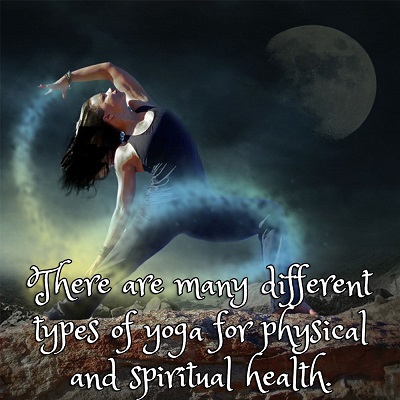 Yoga was introduced in the western world primarily for its health and fitness purposes. However, yoga originated from ancient India as a spiritual discipline of the mind, body and soul. It is used to be practiced by the Hindus for its spiritual discipline and as a form of relaxation. It is known to be a method to attain peace and Zen fully.
Yoga was introduced in the western world primarily for its health and fitness purposes. However, yoga originated from ancient India as a spiritual discipline of the mind, body and soul. It is used to be practiced by the Hindus for its spiritual discipline and as a form of relaxation. It is known to be a method to attain peace and Zen fully.
Today yoga is widely practiced all over the world for many and varied reasons. Different types of yoga and techniques have been added and introduced depending on the purpose required. To fully attain the fitness and health benefits wanted, you should know the specific yoga type that is best-suited to your needs. To help with understanding the benefits of different yoga types, here are listed a few of the common yoga disciplines:
Ananda Yoga
This type of yoga focuses on the proper and balanced supply of energy in the brain and body. This is done by doing gentle postures, proper body alignment, and controlled breathing. This is the yoga primarily done before meditation.
Ashtanga Yoga
This type of yoga involves heavy and continuous postures and exercises that are not recommended for beginners. This discipline has postures and methods that are physically demanding which results in profuse sweating and rapid heart rate.
This serves to detoxify the body from waste and radicals by removing them through sweat. As a result, this type of yoga improves blood circulation, flexibility of the body, calmness of the mind and stamina.
Bikram Yoga
Bikram yoga is also termed hot yoga since this type of yoga is performed in a hot environment with a temperature around 100°F. This style of yoga consists of 26 poses that challenge the physical capability of the person, whether beginner or experienced practitioner. This is an all-over workout that focuses on the muscle’s strength and endurance, flexibility and cardiovascular strength. This form of yoga is also used for injured individuals who want to challenge their body to their maximum capacity.
Hatha Yoga
Hatha yoga is the one most practiced by the general population and is recommended for beginners. It consists of gentle and slow-paced breathing and meditation techniques with slow and relaxed poses called asanas. It is the basic form of yoga and has been the foundation of all yoga types. It is popular because it uses different techniques such as meditation, postures, regular breathing and kundalini to achieve enlightenment, stress management and healthy exercise.
Kundalini Yoga
This type focuses more on the spiritual aspect of yoga which seeks the proper balance of energy all throughout the body. This is achieved through a series of rapid movement and poses with the addition of chanting, breathing and meditation. This type can be very challenging mentally and physically and is not recommended for beginners.
Vinyasa Yoga
Vinyasa yoga is a very physically active form of yoga and focuses on the coordination between breath and movement. This type is also well-known and is commonly called ‘Vinyasa Flow’ since the practice involves flowing from one pose into another. It emphasizes a discipline called ‘Sun Salutation’ which is composed of 12 poses that aim to coordinate each pose with the rhythm of breathing.
Each type of yoga is different, has its own techniques, target benefits, and challenges. Knowing each type and the skill required to do each will help you decide which one will be more beneficial to you.






